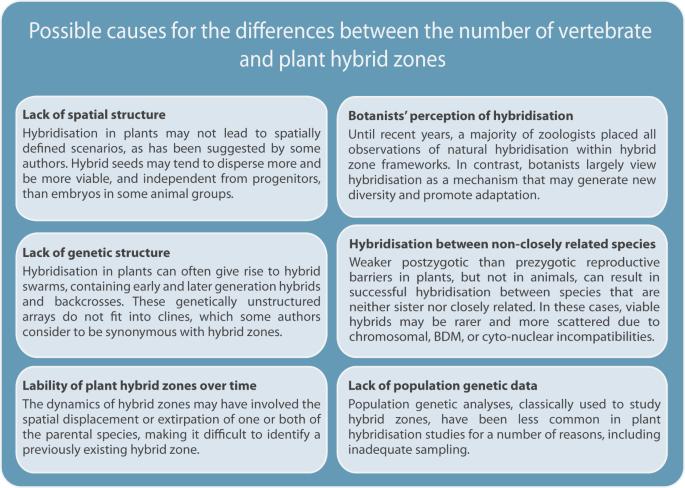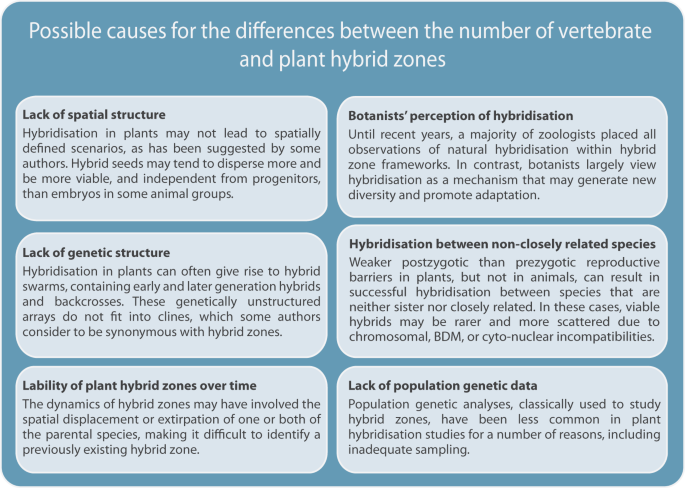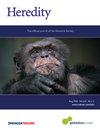植物杂交难题:杂交倾向高,但很少有杂交区报道。
IF 3.1
2区 生物学
Q2 ECOLOGY
引用次数: 0
摘要
R.Abbott最近揭示了一个有趣的难题,他发现文献中报道的植物杂交区的数量非常少,因为植物有杂交的倾向。在1970-2022年期间进行的另一项关于杂交区的文献调查中,我们发现脊椎动物的杂交区数量是维管植物的2.3倍,尽管维管植物物种大约是脊椎动物的6倍。从报道杂交区的论文数量来看,脊椎动物的杂交区是维管植物的4.9倍。这些数字支持了这个难题的相关性。在本文中,我们旨在通过对这一难题背后的原因进行结构化的讨论来阐明这个问题。我们提出了六个非互斥因素,即空间结构的缺乏或缺失、遗传结构的缺乏和缺失、非亲缘物种之间杂交的影响、植物杂交区随时间的不稳定、植物学家对杂交的感知以及种群遗传数据的缺失。似乎没有一个单一的因素可以解释我们的困惑,这适用于所有检测到杂交但没有杂交区报告的植物。有人认为,一些植物特征表明,这个谜题至少完全不是由于对具体案例的了解不足,这一假设应该通过不同分类群的更广泛的经验数据来解决。本文章由计算机程序翻译,如有差异,请以英文原文为准。


The puzzle of plant hybridisation: a high propensity to hybridise but few hybrid zones reported
An interesting conundrum was recently revealed by R. Abbott when he found that the number of hybrid zones reported in the literature for plants is very low, given the propensity of plants to hybridise. In another literature survey on hybrid zones performed over the period 1970–2022, we found that the number of hybrid zones reported for vertebrates was 2.3 times greater than that reported for vascular plants, even though there are about six times more vascular plant species than vertebrates. Looking at the number of papers reporting hybrid zones, there are 4.9 times more on vertebrates than on vascular plants. These figures support the relevance of this conundrum. In this paper we aim to shed light on this question by providing a structured discussion of the causes that may underlie this conundrum. We propose six non-mutually exclusive factors, namely lack or deficit of spatial structure, lack or deficit of genetic structure, effects of hybridisation between non-closely related species, lability of plant hybrid zones over time, botanists’ perception of hybridisation, and deficit of population genetic data. There does not appear to be a single factor that explains our puzzle, which applies to all cases of plants where hybridisation is detected but no hybrid zone is reported. It is argued that some plant features suggest that the puzzle is not, at least entirely, due to insufficient knowledge of the specific cases, a hypothesis that should be addressed with a wider range of empirical data across different taxonomic groups.
求助全文
通过发布文献求助,成功后即可免费获取论文全文。
去求助
来源期刊

Heredity
生物-进化生物学
CiteScore
7.50
自引率
2.60%
发文量
84
审稿时长
4-8 weeks
期刊介绍:
Heredity is the official journal of the Genetics Society. It covers a broad range of topics within the field of genetics and therefore papers must address conceptual or applied issues of interest to the journal''s wide readership
 求助内容:
求助内容: 应助结果提醒方式:
应助结果提醒方式:


